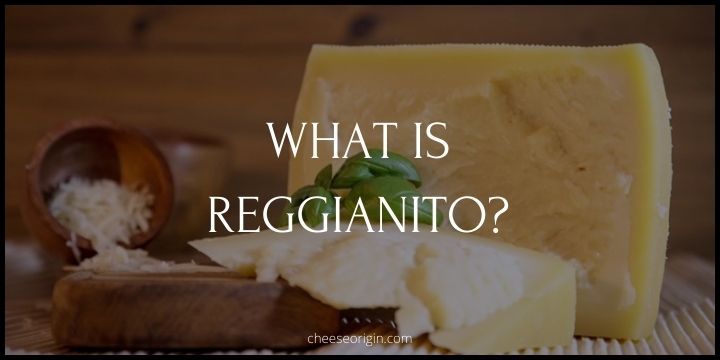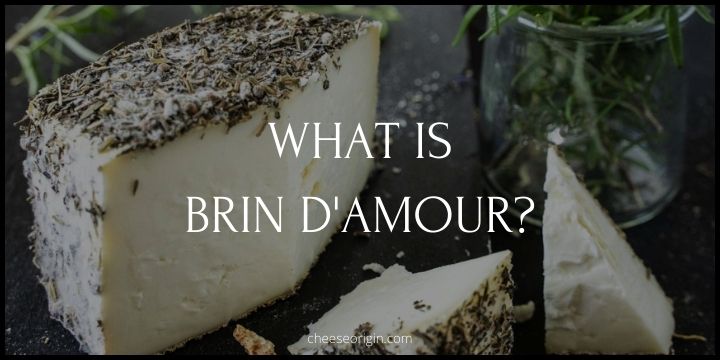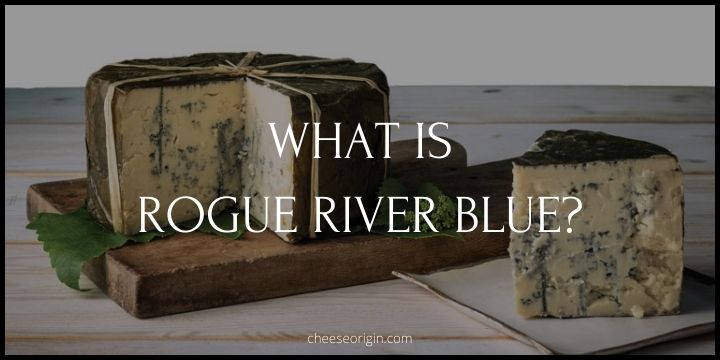What is Vieux Boulogne? The Aromatic Adventure of the World’s Smelliest Cheese

Vieux Boulogne, a cheese as infamous as it is beloved, holds the unique title of the world’s smelliest cheese. This unpasteurized, unpressed cheese hails from the Pas-de-Calais département, specifically around the town of Boulogne-sur-Mer in France.
Its distinctive orange hue and pungent aroma are a result of the rind being brushed with beer during its two-month aging process. However, don’t let its potent scent deter you. This cheese is often described as a “sheep in wolf’s clothing” because its flavor is far more subdued than its strong smell would suggest.
Invented by Antoine Bernard and Philippe Olivier, Vieux Boulogne has dominated the olfactory scene of the cheese world for over 14 years. Yet beneath its stinky rind lies a smooth and creamy cheese that is often enjoyed with a spoon. Despite its strong aroma, or perhaps because of it, Vieux Boulogne continues to be a celebrated part of French culinary tradition.
Quick Facts About Vieux Boulogne
| Fact | Details |
|---|---|
| Origin | Originates from the town of Boulogne-sur-Mer in the Pas-de-Calais department of northern France. |
| Type of Milk | Made from cow’s milk, specifically from the cows grazing in the coastal areas of the region. |
| Texture | Semi-soft with a creamy and supple texture. |
| Rind | Has a rind that is washed in beer, which contributes to its strong aroma and distinctive flavor. |
| Color | The cheese itself is pale yellow, while the rind is a deeper orange due to the beer wash. |
| Taste | Has a robust, intense flavor with salty and tangy notes, and a slightly sweet finish. |
| Aroma | Often referred to as the ‘world’s smelliest cheese’. Its aroma is pungent due to the fermentation process and the beer-washed rind. |
| Maturation | Aged for a period of 7 to 9 weeks. |
| Pairings | Pairs well with robust red wines, dark beers, and crusty bread. |
| Serving Suggestions | Typically served at room temperature to fully appreciate its flavor and aroma. |
| Nutritional Value | High in protein and calcium, and also contains a significant amount of fat. |
| Availability | While it is a specialty of northern France, Vieux Boulogne is available in select cheese shops around the world. |
What is Vieux Boulogne?
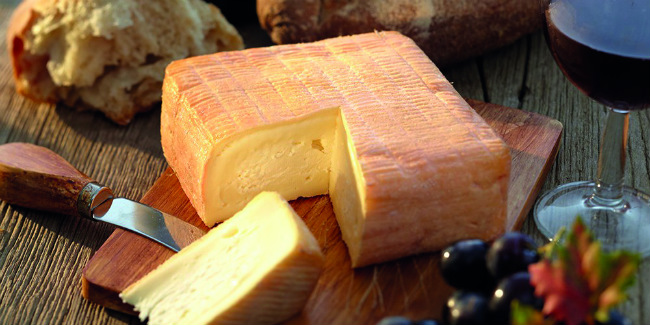
Vieux Boulogne is a distinctive cheese hailing from the town of Boulogne-sur-Mer in the Pas-de-Calais department of northern France. This unpasteurized, unpressed cow’s milk cheese is a testament to the rich culinary traditions of the region. The cheese carries an intriguing reputation – it is often referred to as the world’s smelliest cheese, a title it has held undefeated for 14 years.
Despite its formidable aroma, Vieux Boulogne is a classic example of a “sheep in wolf’s clothing”. Beneath its robust smell lies a surprisingly delicate flavor, offering a delightful contrast that intrigues cheese connoisseurs. Its bite is far more demure than its bark, making it a fascinating addition to any cheeseboard.
The cheese owes its distinctive orange hue and pungent smell to the unique aging process. Over a period of two months, the rind of the Vieux Boulogne is brushed with beer, contributing to its strong aroma and flavor profile. This beer-washed rind is a characteristic feature of the cheese, setting it apart in the world of gourmet cheeses.
Beneath the stinky rind of Vieux Boulogne lies a smooth and creamy texture. It is a cheese that invites exploration beyond initial impressions, revealing a depth of flavor that is both complex and satisfying. Despite its reputation as the world’s smelliest cheese, Vieux Boulogne enjoys popularity among those who appreciate the art of cheese making.
The truth is, Vieux Boulogne is more than just a cheese; it’s a sensory experience that challenges and rewards those daring enough to explore it. Whether served on a cheese board or included in a gourmet recipe, this French cheese promises a unique gastronomic adventure.
What Does Vieux Boulogne Taste Like?
Vieux Boulogne, often referred to as the world’s smelliest cheese, offers a fascinating taste experience that belies its pungent aroma. Despite its reputation for a strong smell, it has a surprisingly mellow and gentle flavor.
The flavor profile of Vieux Boulogne is rich and complex. The earthy flavors are complemented by notes reminiscent of mushrooms and onions. Saltiness comes through, adding another layer to its substantial, mushroomy, and rich flavor. It is often described as creamy, with a salty undertone.
The contrast between the robust aroma and the delicate flavor is part of what makes this cheese so intriguing. Despite its unsavory reputation, Vieux Boulogne’s bark is indeed far worse than its bite.
Vieux Boulogne is often served with crusty bread and beer, which perfectly complements its unique taste. So, if you’re adventurous enough to get past its formidable smell, you might find that Vieux Boulogne offers a delightful gastronomic journey.
Vieux Boulogne Tasting Notes
- Aroma: The first thing you’ll notice about Vieux Boulogne is its strong aroma, considered one of the most pungent in the world of cheese. This is largely due to the beer-washed rind that gives it a distinctive smell.
- Appearance: Vieux Boulogne has a striking orange rind, which comes from being washed in beer during the aging process. The cheese itself is a pale yellow color.
- Texture: Despite its robust smell, Vieux Boulogne has a surprisingly smooth and creamy texture. It’s semi-soft and supple, offering a delightful contrast to its strong aroma.
- Flavor: Vieux Boulogne has a complex flavor profile. It has a robust, earthy taste with salty undertones. You might also detect hints of mushrooms and onions. Its flavor is intense but not overpowering, with a slightly sweet finish.
- Aftertaste: Vieux Boulogne leaves a lingering aftertaste that is both rich and satisfying. The flavor continues to unfold even after you’ve finished your bite, making for a memorable tasting experience.
How to Eat Vieux Boulogne
Eating Vieux Boulogne, known as the world’s smelliest cheese, is a unique experience that can be thoroughly enjoyable if approached correctly.
- Allow to Warm: Like most cheeses, Vieux Boulogne is best enjoyed at room temperature. Take it out of the refrigerator an hour before serving to allow its flavors and aromas to fully develop.
- Cutting: Use a good cheese knife to cut Vieux Boulogne. You can cut it into thin slices or small chunks, depending on your preference.
- Pairing: Vieux Boulogne pairs well with robust red wines and dark beers. The strong flavors of these beverages can stand up to the intense aroma and flavor of the cheese. For food pairings, consider crusty bread, fruits like apples or grapes, or even dark chocolate.
- Tasting: When you’re ready to taste, take a small bite and let it sit in your mouth for a moment to allow the flavors to unfold. Don’t let the strong smell deter you – the flavor of Vieux Boulogne is much milder than its aroma would suggest.
- Incorporate into Recipes: Beyond direct consumption, Vieux Boulogne can also be incorporated into various gourmet recipes. It can be melted into a fondue, used in a cheese sauce for pasta, or included in a gourmet sandwich.
Note: the key to enjoying Vieux Boulogne is to approach it with an open mind. Its strong aroma may be off-putting at first, but beneath that lies a complex and rewarding flavor profile that many cheese lovers find irresistible.
7 Best Vieux Boulogne Substitutes
| Cheese | Description | Tasting Profile |
|---|---|---|
| Maroilles | A strong-smelling cheese from northern France. Its rind is washed in beer, similar to Vieux Boulogne. | Robust, tangy flavor with earthy undertones. The texture is creamy and slightly crumbly. |
| Taleggio | An Italian cheese with a pungent smell but a mild flavor. The rind is washed, which contributes to its strong aroma. | Fruity tang with a slight sour finish. Its texture is moist-to-oozy with a very pleasant melt-in-your-mouth feel. |
| Roquefort | A well-known blue cheese from southern France, made from sheep’s milk. | Sharp, tangy flavor and crumbly texture. Its taste is complex with notes of sweet, salty, and sour elements. |
| Epoisses | A French cheese known for its strong aroma and rich, creamy interior. | Complex flavor that is salty, creamy, and slightly sweet. It is soft and gooey in texture. |
| Muenster / Munster | A soft cheese with a smooth, elastic texture. The French version (Munster) is stronger in flavor than the American Muenster. | Mild flavor when young, but as it ages it becomes more tangy and pungent. The texture is smooth and elastic. |
| Camembert | A classic French cheese that is creamy and mild. | Buttery, creamy flavor and a soft, oozy texture. The taste can have slight notes of mushroom and garlic. |
| Stinking Bishop | A British cheese with a pungent smell, thanks to the perry (pear cider) wash on its rind. | Rich, creamy flavor with a mild, fruity tang. Its texture is soft and spoonable. |
What Pairs Well With Vieux Boulogne?
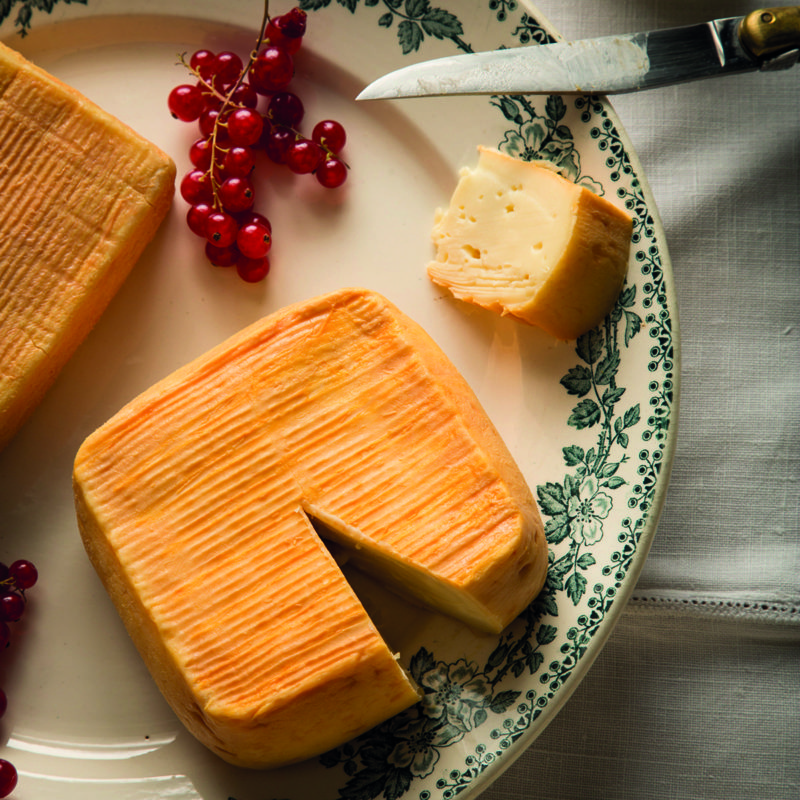
- Cheeses: Other strong cheeses can be paired with Vieux Boulogne. These include Epoisses de Bourgogne, Camembert, Munster, and Roquefort. Each of these cheeses has a distinct flavor that can hold up to the strong taste of Vieux Boulogne.
- Breads: A crusty French bread or artisan baguette would pair wonderfully with Vieux Boulogne. The bread’s mild flavor and crunchy texture provide a nice contrast to the cheese’s strong flavor and soft texture.
- Fruits: Tart apples and sweet grapes can balance out the rich, pungent flavor of Vieux Boulogne. Figs, which have a natural sweetness, also pair well with this cheese.
- Charcuterie: A traditional Italian charcuterie board with a variety of cured meats can complement the strong flavor of Vieux Boulogne.
- French Foods: French foods such as Moules marinières (Marinated Mussels), Ecume de Wimereux, and Volailles de Licques can be paired with Vieux Boulogne for a truly French culinary experience.
- Dark Chocolate: Dark chocolate, with its bitter and sweet flavors, can be an interesting match with Vieux Boulogne. The chocolate’s sweetness can balance the cheese’s saltiness, while its bitterness can complement the cheese’s tanginess.
Also read:
- What is Pouligny-Saint-Pierre? A Taste of Central France in Every Bite
- What is Rocamadour Cheese? A Bite-Sized Wonder of French Gastronomy
- What is Selles-sur-Cher? A Taste of France’s Artisanal Heritage
- What is Crottin de Chavignol? The Jewel of the Loire Valley
- What is Pélardon? A Taste of the French Countryside in Every Bite
- What is Saint Nectaire? A Taste of the Auvergne Region’s Volcanic Pastures
- What is Tome des Bauges? The Art of Artisanal Cheese
